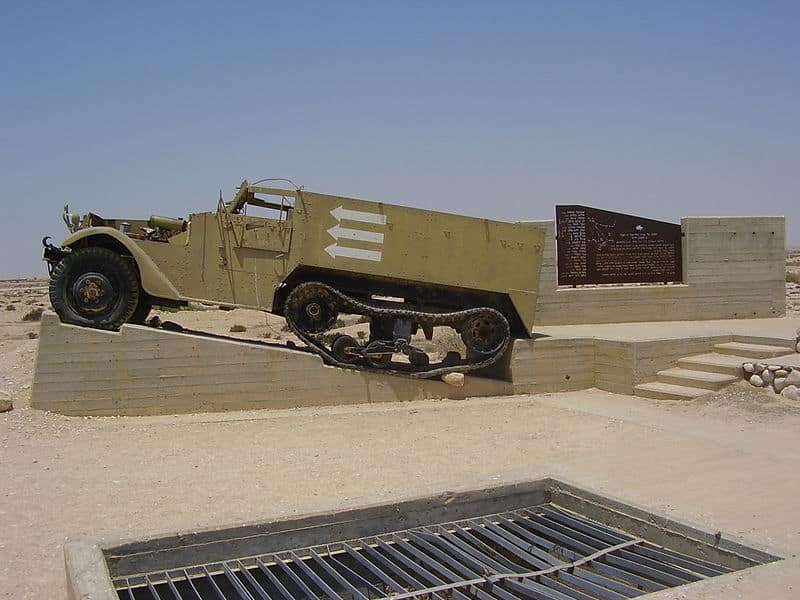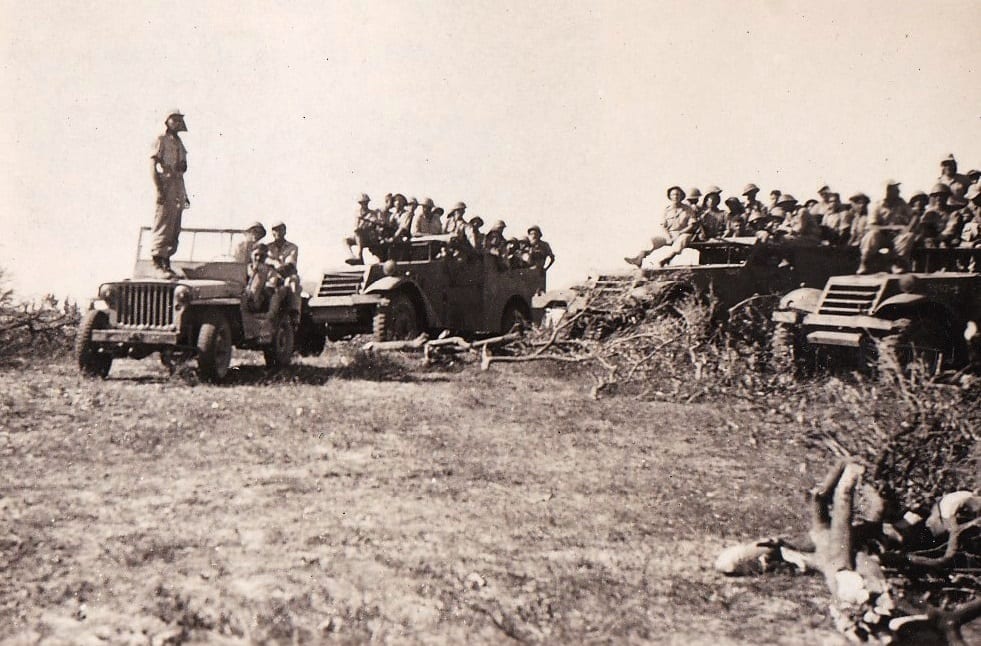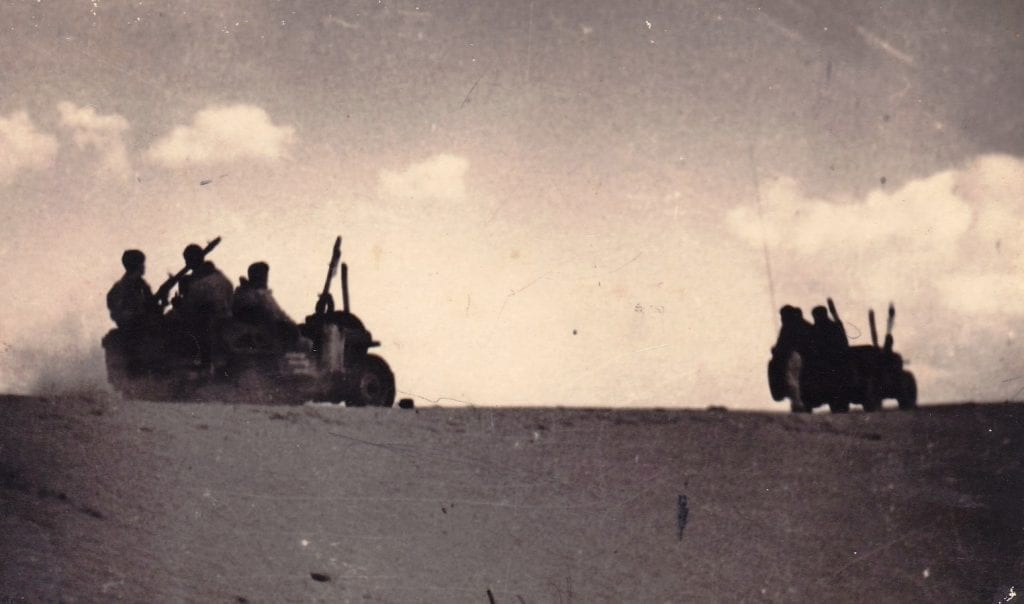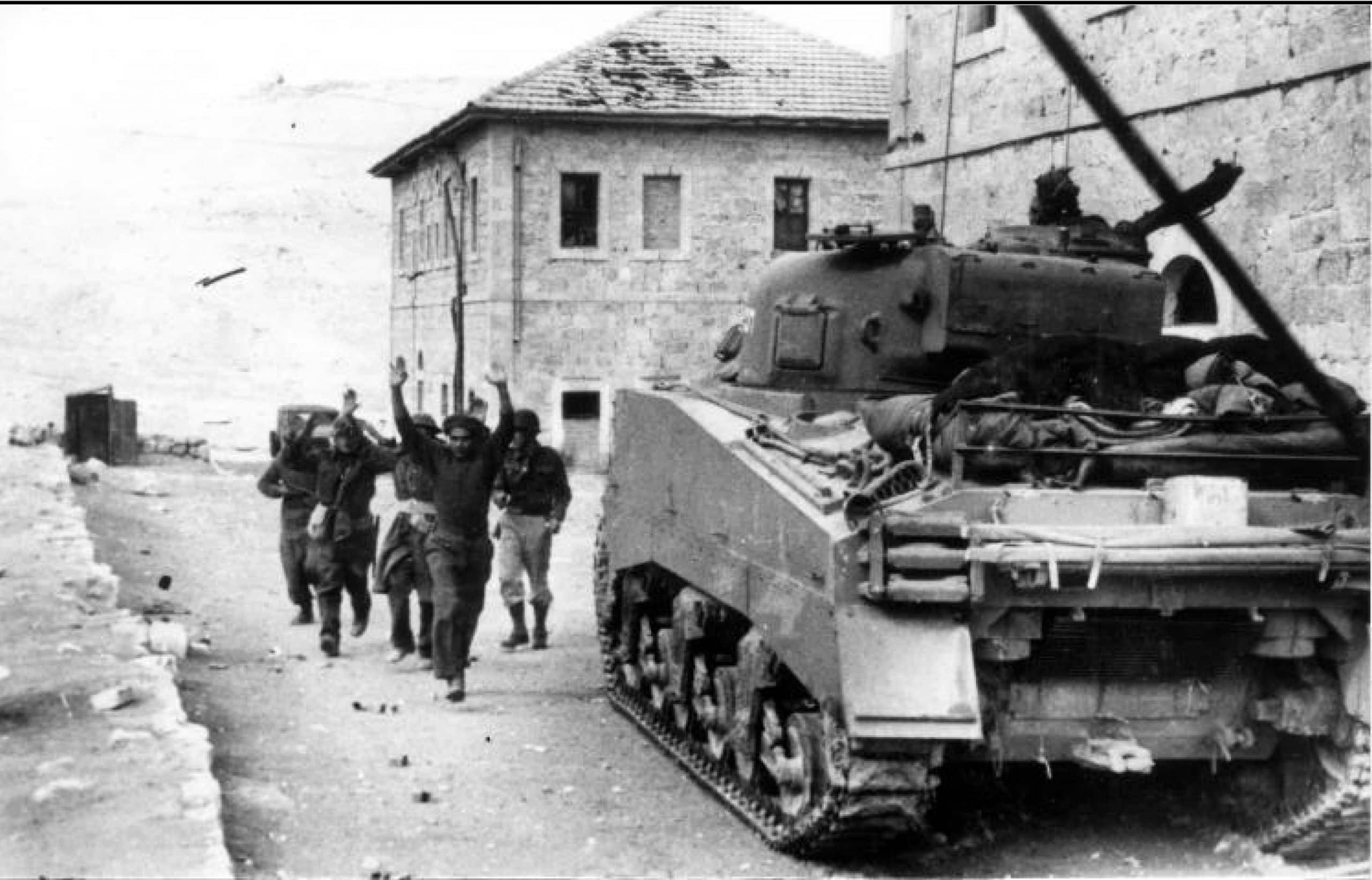The area of Nitzana is known as an area that includes antiquities, places with unique names such as Be’er Milka, Ezuz and Kmehin, as well as many tasty cherry tomatoes grown by the farmers in the area. Nitzana is also an important Nabataean city in one on the junctions of the Incense Trade Route. Only few are familiar with and cherish the story of the IDF behind it – the site of the battles of Auja al-Hafir, which we will tell today and save from oblivion. Along the way, we will also get to know the Lehi man Yaakov Granick (Dov), who fell in battle.
Nature of the Tour: On foot
Length of the Tour: 1-2 hours
Degree of Difficulty: Easy
Starting Pointing: The Monument for Brigade 8 at the foothills of Tel Nitzana.

Background: Auja al-Hafir from 1906 to 1948
The area of Nitzana, also known as Auja al-Hafir, is one of the least central locations in Israel, yet it enjoyed glory in the past. The reason for this is its being an important border crossing to Egypt in the early 20th century, which led the Ottomans to establish a Control Center and hospital there, the ruins of which exist to this day.
After the Ottoman Empire joined World War One on the side of the Axis Powers, the importance of Auja al-Hafir increased even further, as a launching point for attacks on the British stationed in Egypt. Among other things, the ottomans laid down train tracks in the area, as part of the Germans and Ottoman preparations to invade Egypt and seize control of the Suez Canal. Thus, Auja al-Hafir Became an administrative center both for trains and army units. The water tower of the train can be seen to this day just south of the mound.
Auja al-Hafir fell from grace after the San Remo Conference, which gave the Land of Israel to the British as a mandate. Due to British control of Egypt, the importance of the location as a border crossing declined. According to the Partition Plan adopted on November 29, 1947, Auja al-Hafir was part of the Arab state. Immediately after the Declaration of Independence, the Egyptian Army invaded the Land of Israel and seized control the location.
Operation Horev: Expulsion of the Remaining Egyptian Forces from the South
Even after “Operation Yoav”, which was conducted in October 1948 and forced the road into the Negev, significant Egyptian forces remained in the area between Gaza and Be’er Sheva. Operation Horev, which began in late December 1948 and ended in early January 1949, was intended to expel the remaining Egyptian forces within the Land of Israel, including the area of Auja al-Hafir. Many forces participated in the operation, including the Golani Brigade, Brigade 8, the Alexandroni Brigade, the Negev Brigade and the Harel Brigade. The operation was commanded by Yigal Allon, and the operations officer was Yitzhak Rabin.
A Moment Before the Attack, Get Acquainted with the Blond Company Commander: Yaakov Granick
The IDF force, which prepared to capture Auja al-Hafir, was based upon Brigade 8, the first armored brigade of the IDF. The lead regiment was Regiment 82 with four tanks and 12 armored vehicles and additional forces, including Regiment 89. The commander of Company A in Regiment 89 was Yaakov Granick, whose nickname was “Dov” (bear).
Yaakov Granick was born in Poland in 1923. He volunteered to defend Warsaw during the German invasion at the start of World War Two, was taken prisoner but managed to escape. In 1940, he made Aliya by a circuitous route and joined the Lehi, where he received the nom de guerre “Dov”. Granick participated in some of the Lehi’s most daring operations, among them the (failed) assassination attempt of the British High Commissioner Harold MacMichael, breaking Israel Eldad out of prison, the robbery of Barclays Bank and the robbery of the Polish Bank. After the Lehi merged with the IDF, Granick went to officers’ school and was appointed as a company commander in Regiment 89, under the command of Moshe Dayan. He was called “Dov the blonde” or the “blonde captain” by his subordinates.

Course of the Battle: The Fall of Dov and Adherence to the Mission
The first attack occurred on December 26, 1948, but it encountered fierce Egyptian resistance, described by Binyamin Ze’ev von Weisl, the Commander of the Artillery Regiment that provided artillery support to the force: “Meanwhile, the battle for Auja itself rages on… An Israeli vehicle managed to breach the perimeter of the village but took fire from an antitank cannon and Piats. The armored vehicles have been hit again”. Eventually, the force had to retreat while sustaining several losses, most prominent of which – the company commander Yaakov Granick, who took a bullet to the neck and died on the spot.
The fighter Yosef Evron described the fall of Dov:
“The entire company passed before us, faces smiling, hands waving in greeting, with the image of Dov, tall and inspiring a sense of security around him, was prominent in his height on the command vehicle. A chain of daring operations in his past, beginning with the war against the British in the period of the underground and up to the breach of Fort Iraq Sueidan, with all the previous attempts to capture it failing. Dov’s company road towards the peak of the Auja hill; bullets and shells ceaselessly fired at it. Dov’s image was prominent on the command half-track, standing tall as always and speaking commands calmly, when suddenly his voice went silent. A bullet had struck his neck. It turned out, that the company had entered an open field, well targeted by the Egyptians. The order to withdraw was given, and a short time after the charge the company had turned back, without its commander, and with 12 more casualties piled on the half-track”.
The failure of the first attack, and especially the fall of Granick, had impacted the fighters’ morale, but their resolve was unbroken. They reorganized in the rear and prepared for an additional assault, displaying impressive perseverance to the mission. They decided to focus their efforts on an Egyptian weak point, which was identified during the first assault.

This time, the artillery regiment commander described an entirely different reality – victory:
“At first light, at 06:00, the cannons and mortars began a rapid-fire barrage… With the assistance of the artillery, the armored vehicles from Regiment 82 move forward towards the village and seized one strongpoint after another. The enemy surrendered after some of them ran off, in the pre-noon hours… In the afternoon, the Egyptians evacuated the strongpoints west of Auja. In the final hours, the 75 mm cannons opened rapid and intense fire. The shelling managed to stun the enemy completely. The Arabs ran away; at 17:30 after the capture of Auja, the cannons ceased firing. During that day, 734 shells were fired”.
The victory in battle brought about the withdrawal of Egyptian forces from the space (excluding the Al-Faluja Enclave) and enabled the IDF to invade eastern Sinai and reach all the way to al-Arish. Although the IDF eventually withdrew from Sinai, but the Egyptians withdrew from the Al-Faluja Enclave in return, which completed the capture of the Negev.

The cost, as stated, was heavy. The poet Uri Zvi Greenberg eulogized Yaakov Granick, who fell in battle:
“A lament for the Sicarius who was Captain ‘Dov’ in the army of Israel. He was a fiery tree, which none of the waters of his haters could extinguish”.
At the end of the tour, you should play for the family the song “The Ballad for Yitzhak Sadeh”, written by the poet Haim Gouri. The song also mentions Auja al-Hafir:
“They rode a light Jeep that galloped in the storm,
loping on the road to Auja al-Hafir.
And the tanks rush after him with his men,
and his beard grows grayer.”
What else is there to do in the area?
The area of Nitzana presents additional sites of interest for hikers, among them Tel Nitzana, which includes findings from the Byzantine Period and the Ottoman Period, the Nitzana Curves – a rock and sand formation that are pleasure to the eye and heaven for children, the ancient ruins of the City of Shivta, the Ezuz Grove and the Thermo-Solar Power Station in Ashalim.
